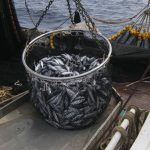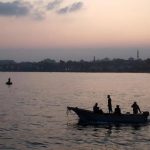The seafood company Aker Seafoods further strengthens its position in the European market for fresh fish. Increased oil prices, a strong Norwegian krone and unrest in financial markets affected the group’s level of activity and profit margins.
Acquiring French seafood company Viviers de France the group is part of Aker Seafoods’ strategically focus on consumer packed fish for South Europe. With Aker Seafoods France, the group has strengthened its position in the European market.
– With the acquisition in France, we have increased sales of consumer packed fish in the first half of 2008. With a base in France, we are able to reach large markets in Europe with an increasing demand for seafood. The largest increase for consumer packed fish is seen in France, Denmark and Sweden, says Aker Seafoods CEO Yngve Myhre.
During the second quarter, operating revenues came to NOK 711 million and EBITDA to NOK 61 million. The corresponding figures for the same period of 2007 were NOK 689 million and NOK 54 million. The group achieved operating revenues of NOK 1 502 million and an EBITDA of NOK 134 million in the first half. That compares with NOK 1 443 million and NOK 149 million respectively in the same period of 2007.
At the end of the six month period, the group has built up a larger inventory of frozen products and salted fish than in the first half. Negative trends in the foreign exchange and financial markets meant that a number of customers delayed their fish purchases in the first half. The group expects to sell out its stocks in line with exciting contracts during the third quarter.
The processing Denmark and Sweden business area had operating revenues of NOK 316 million for the first half, down from NOK 343 million in the same period of 2007. EBITDA was NOK 16 million, compared with NOK 15 million the year before. The EBITDA margin was five per cent as against 4.3 per cent in 2007.
Aker Seafoods Denmark had a decline in its operating revenues for the second quarter due to lower raw material supplies. However, sales of fresh fish packed by the modified atmosphere process (MAP) increased and showed good results during the quarter. Aker Seafoods expects an even further future increase within this segment. In Sweden, sales increased compared with the second quarter of 2007 and EBITDA for the period was marginally positive.
Aker Seafoods France had operating revenues of NOK 121 million in the second quarter of 2008 and an EBITDA of NOK 6 million. The acquisition of Viviers de France represented a continuation of the group’s strategic commitment to consumer-packed fish in southern Europe.
High oil prices will mean a steep rise in fuel costs for the group’s trawler fleet over the full year. The strength of the Norwegian krone against the US dollar, the pound sterling and the Icelandic krona affects the price achieved by Aker Seafoods for its products in the market.
Norwegian saithe was environmentally certified by the Marine Stewardship Council (MSC) in June. This is the first fish species to receive such certification in the Barents Sea, and Aker Seafoods has been a prime mover in efforts to ensure sustainable harvesting and environmental certification of whitefish from Norway.
– During the same month as Norwegian saithe was certified by MSC, our processing plant in Stamsund, Norway, Aker Seafoods J.M. Johansen, was approved for producing Norwegian MCS certified saithe and we can thereby offer our customers saithe that is environmentally certified. The environmental certification makes it possible to achieve a better product mix and thereby higher market prices. In the next six months, we expect to have several of our plants MSC certified, says Myhre.
Aker Seafoods has 48 per cent of its quotas left to harvest in the second half, up five percentage points from 2007. The group also purchased raw material in the second quarter for processing in the last half, when supplies of fish from the coastal fleet are normally smaller and raw material prices are higher than in the first six months. This gives the group a better raw material base for July-December than in the same period of last year.








